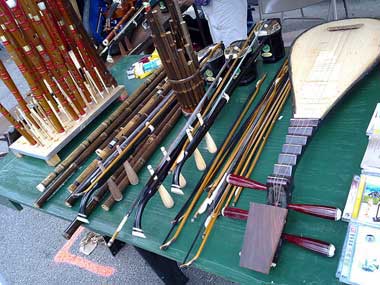A Brief Glimpse into Traditional Chinese Instruments
Traditional Chinese instruments are alluring and exotic in the musical world. Consisting mainly of stringed variations, they provide an interesting contrast to Western musical instruments from the way they are built to the sounds they produce.
In 2001, a 12 Girls Band were formed in China after auditions were conducted from a selection of 4,000 contestants. 12 girls were picked to complement the Chinese mythology of 12 hairpins which represent womanhood. Inspired by the art of Yue Fang, ensembles who played in Tang Dynasty courts, these classically trained musicians performed both classical and contemporary compositions. Their debut album which was released in 2004 covered versions of Coldplay's Clocks and Enya's Only Time.
Exposing Chinese traditional instruments to the world, these 12 girls performed using guzheng (zither), yangqin (hammered dulcimer), dizi (flute) and xiao (vertical flute). Duxiangqin (single-stringed zither) and hulusi (three-piped gourd flute) sometimes make appearances. With their innovative variations to modern songs using classical instruments, the world is able to get acquainted with these Chinese instruments which were once played in teahouses and public gatherings during classical China. Only noble families and families with stature could afford to pay for these musicians.
These instruments are categorized into silk, bamboo, wood, stone, metal, clay, gourd and hide. Each category has similar instruments with same features. For example, silk instruments are mostly string instruments that are plucked, bowed or struck. Silk was initially used for the strings; hence the category silk but today, metal and nylon strings are more frequently used. Bamboo refers to woodwind instruments, stone contains various forms of stone chimes while gourd imitates the sound of a phoenix by being a mouth piece that is made out of hollowed-out plants. Clay is the ocarina with six holes for the finger tips while metal includes bells, cymbals and gongs.
It is interesting to study the varieties of Chinese musical instruments and the ideology behind them. Closely connected to nature, the materials used to make them are organic and even the composition of classical songs are well acquainted with the Chinese beliefs in mother nature.

